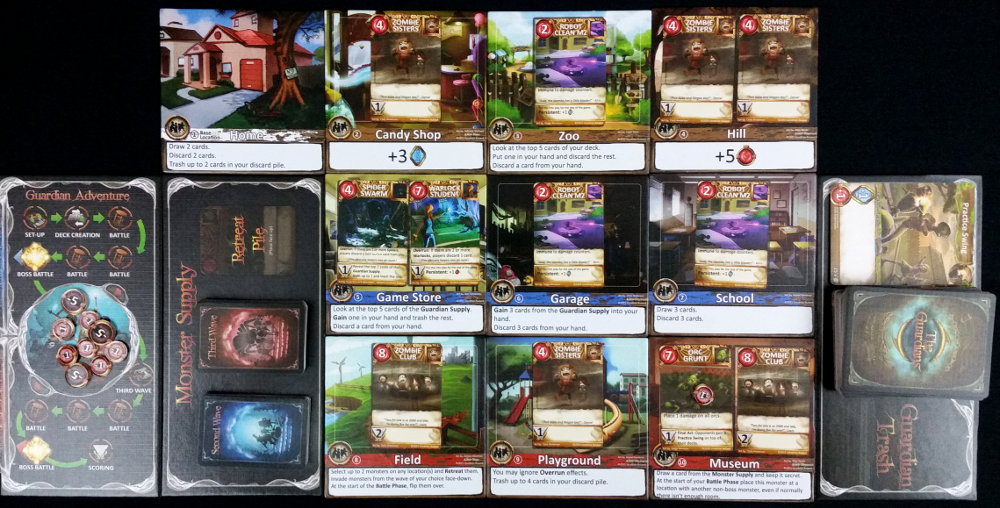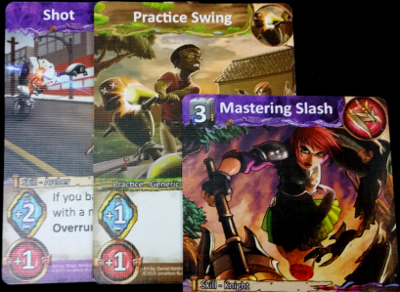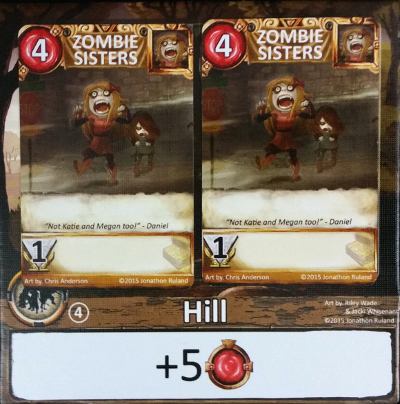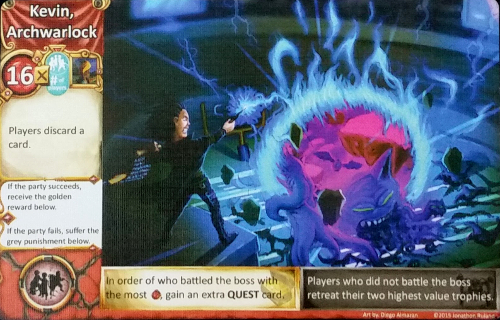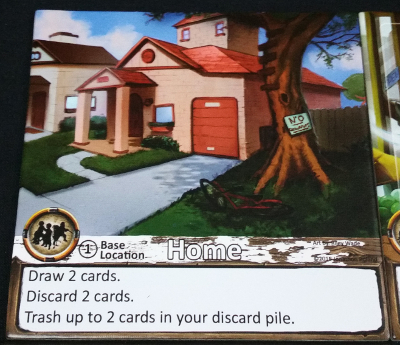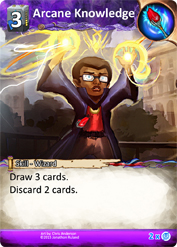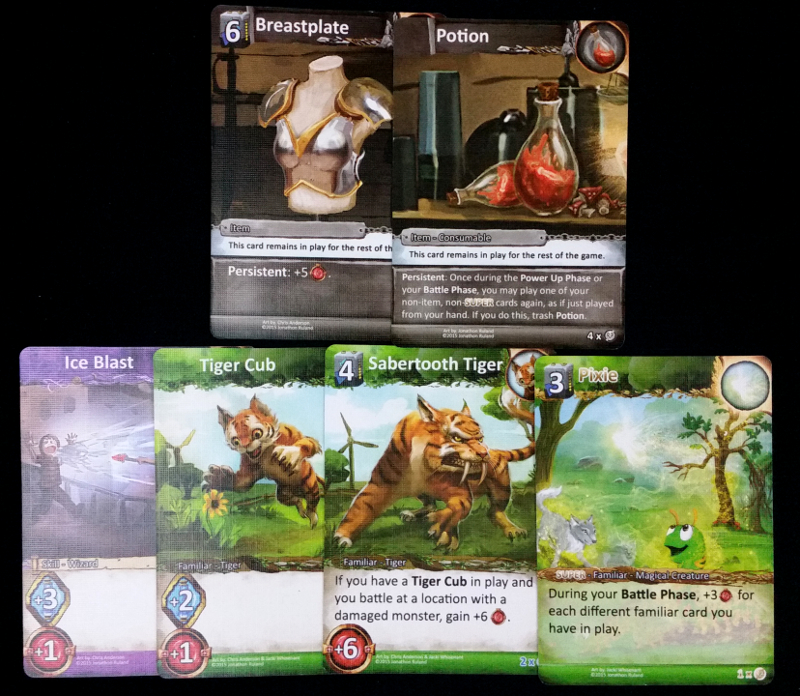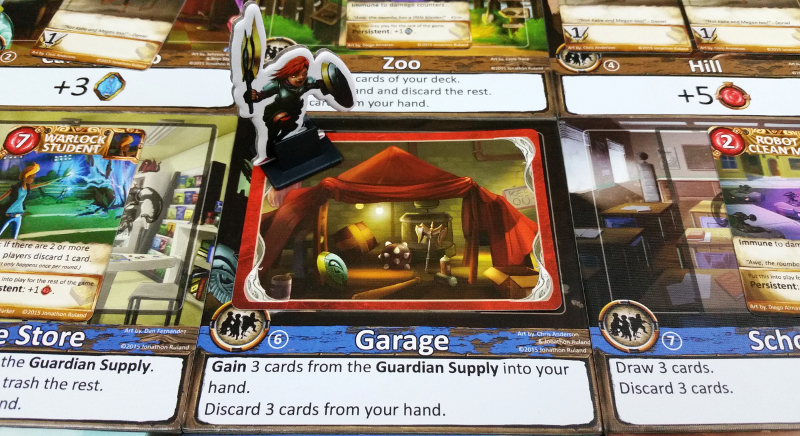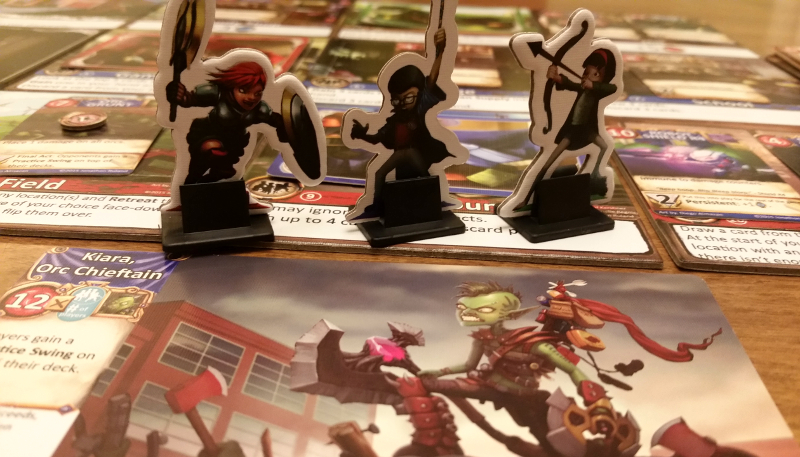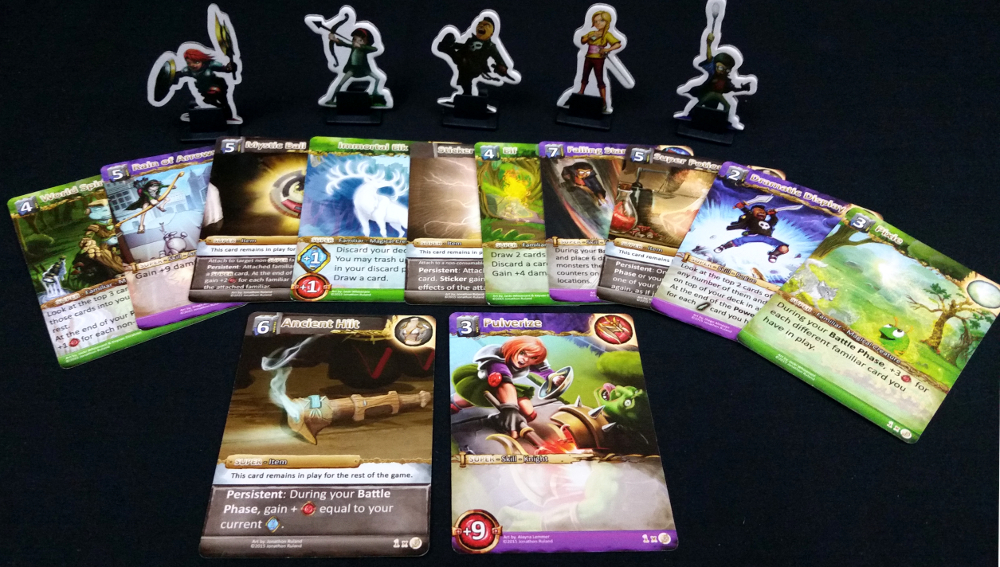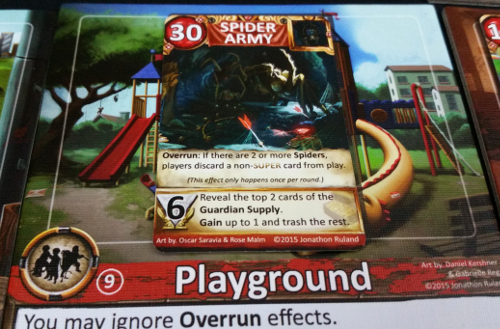“I told you I got it. Look, that’s my arrow right there. This one is mine.”
“Oh whatever, Ashley. Just because you hit it for once doesn’t mean you killed it. I stabbed it like fifty times.”
“Fifty, Liam?”
“Or 40, whatever. I’m just saying: I claim it.”
“Wait wait wait, chimed Daniel. “I set this thing on fire back on Heald Street. I hit it first – it’s my trophy!”
“Don’t be stupid. That didn’t do nuttin’ to bring it down. You did set that tree on fire though…”
“Yeah, that was wicked cool!”
“So that kill is mine then.”
“No! That’s not fair! I did all the work.”
“Not true! Ughhhh. You do this all the time…”
Three children stood over the corpse of a charred and beaten orc soldier, its fetid smell going completely unnoticed by yet another argument over which one was truly responsible for its demise…
The Premise
The humble town of Arthursburg has been overwhelmed by foul magic, unleashing a wave of dangerous and destructive monsters. As a small group of children unaffected by the changes, players must fight off these threats in order to save their beloved town and everyone in it.
The Rules
The Guardians: Explore combines card drafting, deckbuilding, and monster-hunting. To accomplish this, the game requires setup for its numerous tokens, tiles, and decks.
To start, the central board is constructed from ten location tiles and two Bosses – one midgame and one endgame. These placed face down. Every Location except for Home is then filled with 1-2 cards from the first Monster deck.
Each person then receives a player board, a Blanket Fort card, and six starter cards. Additionally, each player is randomly given a pair of Super cards – powerful unique cards for their deck – as well as a pair of Secret Quest cards that provide potential endgame bonuses. They’ll choose one of each to keep.
Games of The Guardians happen in two stages: Warm Up and Battle. During the Warm Up stage, players draft cards to form their decks. Each player is dealt 13 random Guardian cards. Players select one card and pass the rest to the next person until all cards have been chosen. These cards are shuffled together with the starting cards to form a 20-card deck. Everyone draws four cards. The first player is chosen randomly.
Most of The Guardians takes place during the Battle stage, which transpires over eight rounds. Each round is broken into five quick phases: Location, Overrun, Power Up, Battle, and Cleanup. In the Location phase, each player chooses a Location tile free of monsters and gains that Location’s special ability. Afterwards, players check to see if any monsters with the Overrun ability trigger.
Power Up is done simultaneously. This is when everyone plays their cards. In addition to abilities, most cards generate Attack Power (which is used to kill monsters) and / or Energy (which is required to play more powerful cards).
This is followed by the Battle phase. In turn order, players may attack a Location containing monsters – provided the player has enough Attack Power to defeat all the monsters at that Location. Defeated monsters are claimed as trophies (VP). The player may then either draw new monsters from the Monster deck to replace them or put their Blanket Fort on that Location to prevent any new monsters from spawning there.
Finally, the round ends with players discarding their hand and all cards from play, then drawing back up to four.
During the fourth and eighth rounds, players face one of the game’s Bosses. Boss monsters are substantially stronger than normal monsters and are fought by the players collectively. If the Boss is defeated, those who helped are rewarded with a new Super or Secret Quest card, while those who don’t are penalized. If players fail to defeat the second Boss, however, everyone loses.
After the second Boss fight, the game is over. Players total their trophies from defeated monsters and Secret Quests. The hero with the most trophy points wins. They are labeled the True Guardian, becoming the new leader of the group and enjoying all the childhood glory that entails.
At least, until one of the others starts complaining.
The Art Of War
The Guardians: Explore is a game about The Hero’s Journey, albeit with pint-sized heroes, and it wastes no time pushing you out the door and into conflict. From the box cover to the rulebook’s prelude story, The Guardians wants the players to feel the immediacy of the problem you’re facing. The card drafting phase often feels like you’re collectively preparing before heading out to face danger, for example. The Guardians strives to create a thematic experience that resonates with both younger and adult audiences – no easy task for a deckbuilder. But it works.
Nowhere is this better exemplified than through the game’s phenomenal artwork. Whether it’s showcasing the band of spirited adventurers, the town they’re trying to save, or the enemies they’re looking to thwart, the art of The Guardians is exceptionally well done.
Not only does this give the game visual appeal, but it also underscores its central theme. Thanks to a bright and animated style, each playthrough of The Guardians comes off as an upbeat and entertaining story of young heroes facing difficult odds on an epic adventure.
This is reiterated by the deckbuilding process itself. Between copious flavor and the way that the game rewards – or even prefers – that you tailor your deck the way you want so you can kill the bad guys, The Guardians comes across as deckbuilder with a purpose. As a result, this is one deckbuilder Immersionists will be happy to fight alongside.
Deckbuilding 2.0
Although The Guardians is billed largely as a gameplay trifecta, with board actions, card drafting, and deck building, at its core The Guardians is mostly a deckbuilder. In fact, given the quality of the tiles and the ambient view it provides, the board comes across rather underutilized. Although less stellar component-wise, the same can be said of the player boards, which are only used to track Attack values or for draft suggestions based on your Super card.
Similarly, while the card drafting phase is part of The Guardians’ novel take on deckbuilding, it can be played without if need be. Indeed, the game tacitly acknowledges that a combination of card drafting and deckbuilding may even be a bit much for younger or more casual audiences, and offers up an alternative in the form preconstructed deck lists so you can skip the drafting portion of the game entirely.
The clever hook to this game is that the drafting aspect gives you an active hand in guiding what your starter deck looks like. The game offsets this abundance of choice, however, by making it harder to freely manipulate the deck afterwards. This approach is effective at making deckbuilding more accessible to wider audiences, but it also makes it harder to cycle through your deck repetitively. Since you’re only drawing a mere four cards per turn, you’ll only reset your deck a handful of times each game.
Because of this, the more powerful a card is, the better off your chances are of having an effective turn. Much of the game’s strategy therefore lies in honing your deck by drafting well, taking advantage of card combos, and getting rid of useless cards as quickly as possible. Thus, although lightweight, Tacticians should enjoy exploring the more nuanced possibilities in this deckbuilder most, even if it may not be a game that’ll hold their interest after extensive playthroughs.
Daredevils, on the other hand, are going to be far less enthused by the reality that victory hinges on sculpting your deck solely to deal as much damage as possible. They’ll enjoy the spirit of the game – attacking monsters and venturing to different Locations – but with little room for unconventional deck styles, it’s unlikely to appeal to them. For them, being a Guardian is just too constricting.
Encyclopedia Guardinia
For everything the game does well in being an inviting and lightweight deckbuilder, it does run into a pair of issues where it struggles maintaining the Gateway Plus Game status it’s aiming for.
First is the rulebook itself. Games can suffer from having too few rules explained, which leads to confusion, ambiguity, and problematic loopholes. Yet it’s also possible for games to over-explain their rules. The Guardians falls into that latter camp.
By design, The Guardians is not an overly complicated game: players visit locations, play their hand of cards to the table to maximize their Attack Power, and then kill various monsters in the hopes of racking up the most VP. A couple times you fight a boss.
That’s it.
The problem is that the rules are explained in a manner that gives the opposite impression, making the game seem more complex than it really is. Parts of the rule book are done particularly well, such as an appendix explaining the cards and Locations, as well as detailed breakdowns of nearly every other facet of the game, from how to play cards and the tableau layout. Yet its meticulous effort to make the rules accessible through detailed or wordy explanations unintentionally undercuts this.
Moreover, in spite of this information barrage the rules still contain a couple of minor omissions where players must make inferences, such as when during the boss rounds the boss is revealed (the beginning), or what Retreating a monster does (it’s discarded).
The other issue is the uneven progression of monster strength.
On the plus side, the combination of the game’s two primary mechanics leads to a clever but subtle shift as the player size changes. For instance, in games of 2-3 players, initial decks can be a bit swingy in usefulness depending on which Super cards you’re given and which cards show up in the draft. This leads to decks that range from explosive to anemic. However, this also leaves plenty of Guardian cards for you to upgrade your deck with throughout the course of the game via Locations or killing certain monsters.
With games of 4-5 players (or playing solo), the opposite is true, often leading to games with a better distribution of draft cards to choose from but a much lower percentage of good cards to acquire after the fact. This sets up interesting choices to make during each playthrough while giving the game some extra replayability. That said, while Architects will certainly enjoy being able to customize their deck either way, they’ll likely prefer the flow of games with less than four people.
The problem comes when you need to use those decks to attack the various bad guys running around. The monsters are divided into three decks, with each being more difficult than the last. If players don’t have a potent engine by the time the third deck hits, though, killing them becomes incredibly onerous.
While these issues don’t detract from the game substantially, they do make it difficult to entice Socializers and younger players. Between play times over an hour and rules that seem intimidating, Arthursburg is not a place many of them will return to. Similarly, Strikers are going to be decidedly mixed on the game. They’ll definitely enjoy the competition among players to see who can get the most monster trophies, but they’ll undoubtedly also be frustrated from stifled moments of unkillable monsters and poor draws thanks to the four card hand size and the standard luck of the draw nature of deckbuilding.
The Takeaway
The Guardians has a lot of heart. From the first cards dealt to the final boss battle, this game is both a fitting representation of, and homage to, the ever-relatable stories of junior aged heroism. Using an innovative blend of card drafting and deckbuilding mechanics, the game creates an immersive experience where magic is real, evil must be stopped, and only your gang of preteens are the ones to do it. This is bolstered by the game’s wonderful art, evoking the wistful motes of childhood adventure with the ante turned up. That The Guardians conveys this primarily as a card game is commendable. The components are decent, the gameplay intuitive, and although it stumbles in small areas such as an overly busy rulebook, the game still succeeds as a lightweight deckbuilding game that’s accessible to families and gamers alike.
The Guardians: Explore is a product of Reihon Games.
Cardboard Republic Snapshot Scoring (Based on scale of 5):
Artwork: 4.5
Rules Clarity: 3
Replay Value: 3.5
Physical Quality: 3.5
Overall Score: 3.5

